By Robert Tate, Automotive Historian and Researcher
Images courtesy of the National Automotive History Collection
Posted: 10.29.2017
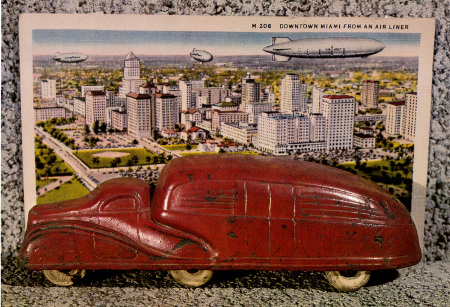 Truck and Trailer Rubber Made by the Sun Rubber Company 1940The early 1970s marked the golden age of toy car hobby with many in America, young and old, taking up the pastime of collecting the latest miniature automobiles on the market. It was a time when toy car making was intended to be fun, and not as much educational.
Truck and Trailer Rubber Made by the Sun Rubber Company 1940The early 1970s marked the golden age of toy car hobby with many in America, young and old, taking up the pastime of collecting the latest miniature automobiles on the market. It was a time when toy car making was intended to be fun, and not as much educational.
One of the great books that documents this era is Ken Botto’s “Past Joys,” which takes a look back at this period in the country when toy making was considered an art form. The book depicts not only car miniatures but other toys now considered to be highly collectible and quite valuable. The book was released during the early 1970s when antique toy collecting was becoming a popular interest among many adults myself included.
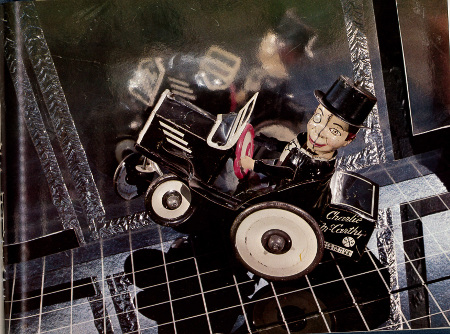 Charlie McCarthy tin windup by Marx-1938In 1970, Ken Botto said this about his book, “It takes a serious satirical look at the way our new world has become; it tells us about a world that once was, during a time of bright lights and hope.”
Charlie McCarthy tin windup by Marx-1938In 1970, Ken Botto said this about his book, “It takes a serious satirical look at the way our new world has become; it tells us about a world that once was, during a time of bright lights and hope.”
Pioneering toy car manufacturers in the early days produced cars and trucks in rubber. Rubber toys were less expensive than their metal, die-cast counterparts and usually available for purchase in many dime stores such as Woolworth’s - a major chain retail store with locations across the country.
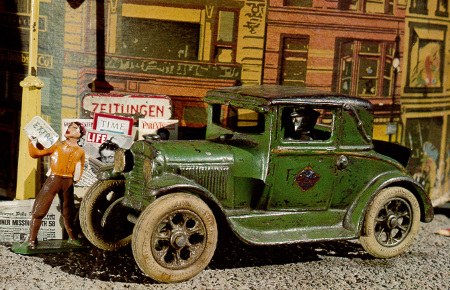 Model A Ford in cast iron by Arcade-1930The toys were formed in molds which offered very good detail and would never rust. Another material used in the early days was cast iron. Cast-iron toy cars and trucks were made of molten gray iron poured by hand into sand casting molds. They were usually cast in halves and were then bolted or riveted together. When the toys were painted, they were usually baked on with fine details such as pin striping that were hand-painted or stenciled. Cast iron toys had a unique solid feeling in your hand because of their heavy weight and durable construction.
Model A Ford in cast iron by Arcade-1930The toys were formed in molds which offered very good detail and would never rust. Another material used in the early days was cast iron. Cast-iron toy cars and trucks were made of molten gray iron poured by hand into sand casting molds. They were usually cast in halves and were then bolted or riveted together. When the toys were painted, they were usually baked on with fine details such as pin striping that were hand-painted or stenciled. Cast iron toys had a unique solid feeling in your hand because of their heavy weight and durable construction.
Steel toys were very popular toys as well during the early part of the 1920s to 1940s. Steel toys were constructed from stamped or pressed heavy-gauge automotive sheet metal. These were the larger pedal cars and trucks that children could ride. These were heavy duty toys that could not be easily destroyed or broken. Many of these larger riding toys incorporated popular advertising from the day including the Coca-Cola brand and Wrigley’s chewing gum which featured branding artwork that has become ingrained into American culture.
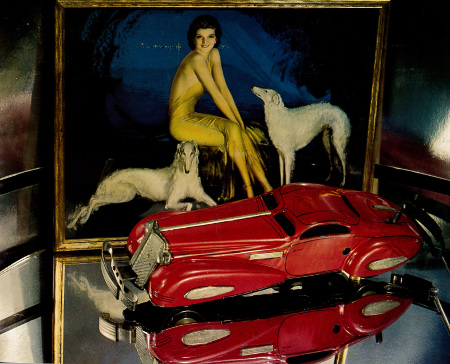 Tin windup by Marx-1938During the early days of collecting, miniature automobiles were brought and used in profusion with miniature railroad systems.
Tin windup by Marx-1938During the early days of collecting, miniature automobiles were brought and used in profusion with miniature railroad systems.
During the 1920s through 1930s Tootsietoys (not shown here) became a very popular toy for younger kids and are very collectible today. They were manufactured as an assortment of cast-metal miniature look-alikes from the popular automotive brands of the day including La Salle, Ford coupes and sedans, Graham coupe, Mack trucks and other well known, now iconic, automotive companies. Mr. Theodore S. Dowst from Chicago started the Tootsietoy Company in the 1920s.
 1940s-era Coca Cola truck made in steel by MarxIn conclusion, the toy cars and trucks from the early 20th century helped support American families with inexpensive and fun hobbies through dark times such as the Great Depression, and during a time when Americans were preparing for WWII. These classic toys and the hobby that lives on is a testament to our American heritage.
1940s-era Coca Cola truck made in steel by MarxIn conclusion, the toy cars and trucks from the early 20th century helped support American families with inexpensive and fun hobbies through dark times such as the Great Depression, and during a time when Americans were preparing for WWII. These classic toys and the hobby that lives on is a testament to our American heritage.
Ken Botto once said, “The toys themselves are important because they comment upon the real society that made them.”
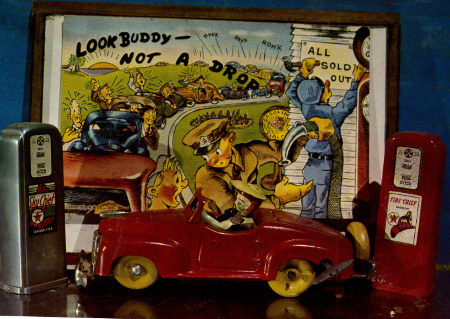 Lady in convertible tin windup model-1940s
Lady in convertible tin windup model-1940s



